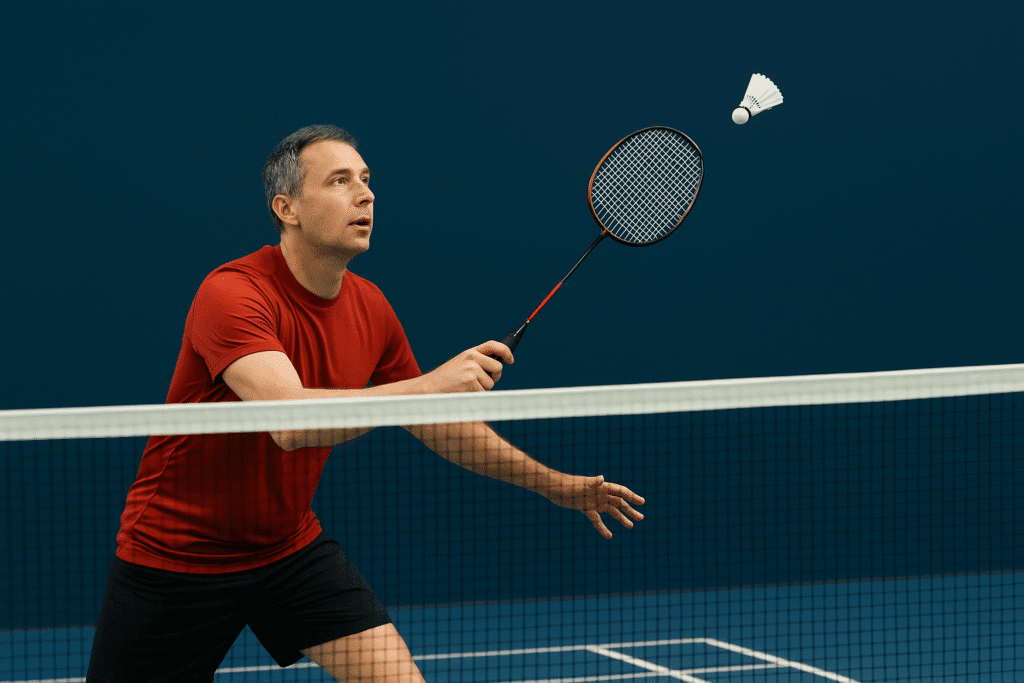Badminton Game & Sports – Rules, How to Play and Key Benefits

Badminton is one of the fastest-growing racquet sports worldwide, played casually in backyards, professionally in Olympic arenas, and socially in clubs and schools. The combination of speed, skill, and strategy makes badminton both exciting to watch and rewarding to play. Understanding the rules, play techniques, and benefits of badminton helps players of all levels improve their game and enjoy the sport to the fullest.
What is Badminton?
Badminton is a racquet sport where players hit a shuttlecock over a net, aiming to land it within the opponent’s court. Unlike tennis, the shuttlecock is lightweight and travels at extremely high speeds, requiring sharp reflexes, agility, and endurance. As a globally recognized badminton game, it is governed by the Badminton World Federation (BWF), which oversees rules, tournaments, and international rankings.
History of Badminton Sports
The roots of badminton sports trace back to the 16th century, where a game called battledore and shuttlecock was enjoyed in Europe. In the 19th century, British officers in India popularized the modern form, which later spread to England. By 1934, the BWF was established, and badminton became a major competitive sport. Its inclusion in the 1992 Olympic Games elevated badminton to global recognition, producing champions from countries like China, Indonesia, Denmark, and India.
Badminton Court and Equipment
Court Dimensions
- Singles: 13.4 m long x 5.18 m wide
- Doubles: 13.4 m long x 6.1 m wide
- Net: 1.55 m at posts, 1.524 m at center
Equipment for Badminton Game
- Rackets: Lightweight (70–100 g), available in head-light, head-heavy, or balanced designs
- Shuttlecocks: Feather shuttles for tournaments, nylon for recreational play
- Shoes: Non-marking soles with good grip and ankle support
- Accessories: Grips, wristbands, socks, and badminton nets
Official Rules of Badminton
The rules of badminton sports are standardized by the BWF.
Scoring System
- Matches are played to the best of three games
- Each game is up to 21 points, rally scoring system
- At 20–20, players must win by 2 points
- First to 30 points wins if score reaches 29–29
Serving Rules
- Serve must be hit below waist height with racket shaft angled downward
- Serve diagonally into the opponent’s service box
- In singles, serve from right on even scores, left on odd
- In doubles, partners rotate service turns
Faults in Badminton
- Shuttlecock lands outside boundaries
- Shuttle fails to cross the net
- Double hits by the same side
- Player touches the net with body or racket
Let Situations
- If the receiver isn’t ready
- Shuttle stuck in net after serve
- Rally interrupted by external interference
How to Play Badminton for Beginners
Learning the badminton game starts with mastering the basics:
- Grip
- Forehand grip: for clears, smashes, and net shots
- Backhand grip: for defensive returns and drives
- Forehand grip: for clears, smashes, and net shots
- Footwork
- Stay light on your toes, use split-step readiness
- Practice lunges, side shuffles, and quick direction changes
- Stay light on your toes, use split-step readiness
- Essential Shots
- Clear: High, deep shot to backcourt
- Drop: Soft stroke near the net
- Smash: Strong downward finishing shot
- Drive: Flat, fast rallying shot
- Net Shot: Gentle control shot close to net
- Clear: High, deep shot to backcourt
- Singles vs Doubles
- Singles: endurance, accuracy, patience
- Doubles: teamwork, speed, rotation, and net play
- Singles: endurance, accuracy, patience
Benefits of Playing Badminton Sports
Badminton delivers physical, mental, and social benefits, making it one of the most complete sports.
1. Improves Physical Fitness
Playing badminton burns 400–500 calories per hour. It strengthens legs, arms, core, and shoulders while enhancing stamina and balance.
2. Builds Reflexes and Agility
Badminton is the fastest racquet sport, with shuttle speeds exceeding 400 km/h. This improves coordination, sharpens reflexes, and boosts agility.
3. Heart and Metabolic Health
As an aerobic workout, the badminton game reduces blood pressure, improves lung capacity, and lowers risks of diabetes.
4. Stress Relief and Mental Clarity
Exercise in badminton stimulates endorphins, lowering stress and enhancing focus, memory, and sleep cycles.
5. Social Connection
Badminton is interactive — whether singles or doubles, the sport encourages communication, teamwork, and a strong social circle.
6. Suitable for All Ages
From kids in schools to seniors at clubs, badminton sports adapt to fitness levels, making it inclusive and enjoyable for everyone.
7. Lifestyle Enhancement
Strategic thinking, quick decision-making, and consistent practice in badminton translate into discipline and confidence in daily life.